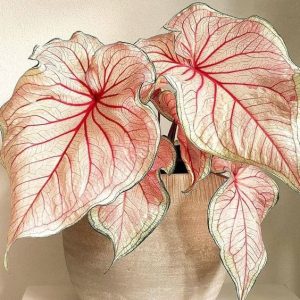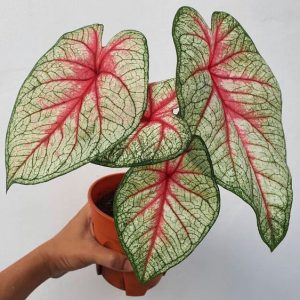- English
- Chinese
- French
- German
- Portuguese
- Spanish
- Russian
- Japanese
- Korean
- Arabic
- Irish
- Greek
- Turkish
- Italian
- Danish
- Romanian
- Indonesian
- Czech
- Afrikaans
- Swedish
- Polish
- Basque
- Catalan
- Esperanto
- Hindi
- Lao
- Albanian
- Amharic
- Armenian
- Azerbaijani
- Belarusian
- Bengali
- Bosnian
- Bulgarian
- Cebuano
- Chichewa
- Corsican
- Croatian
- Dutch
- Estonian
- Filipino
- Finnish
- Frisian
- Galician
- Georgian
- Gujarati
- Haitian
- Hausa
- Hawaiian
- Hebrew
- Hmong
- Hungarian
- Icelandic
- Igbo
- Javanese
- Kannada
- Kazakh
- Khmer
- Kurdish
- Kyrgyz
- Latin
- Latvian
- Lithuanian
- Luxembou..
- Macedonian
- Malagasy
- Malay
- Malayalam
- Maltese
- Maori
- Marathi
- Mongolian
- Burmese
- Nepali
- Norwegian
- Pashto
- Persian
- Punjabi
- Serbian
- Sesotho
- Sinhala
- Slovak
- Slovenian
- Somali
- Samoan
- Scots Gaelic
- Shona
- Sindhi
- Sundanese
- Swahili
- Tajik
- Tamil
- Telugu
- Thai
- Ukrainian
- Urdu
- Uzbek
- Vietnamese
- Welsh
- Xhosa
- Yiddish
- Yoruba
- Zulu
- Kinyarwanda
- Tatar
- Oriya
- Turkmen
- Uyghur

Inside air quality has grown to be a major issue in contemporary homes. More and more individuals are starting to pay attention to ways to raise indoor air quality given changing lifestyles and growing indoor air pollution. Because of their beauty and usefulness, Bonsai are increasingly brought into homes; one of the most important issues is their air-purifying properties.

Bonsai
Potted plant air purification concept; photosynthesis
By means of photosynthesis, convert carbon dioxide into oxygen, therefore increasing the indoor oxygen concentration. Plants absorb sunlight via chlorophyll and transform carbon dioxide and water into glucose and oxygen, therefore following a fundamental process of photosynthesis. This not only raises indoor oxygen levels but also reduces the carbon dioxide content in indoor air.
Advertisation of gas
Plant roots and leaves have adsorption capability and may therefore absorb and eliminate dangerous pollutants from the atmosphere. Certain plants can efficiently clean the air of harmful pollutants such benzene, formaldehyde, trichloroethylene, etc. Microorganisms help plants’ roots transform dangerous chemicals into benign ones; leaves immediately absorb contaminants in the air via stomata.
Elimution of volatile organic compounds
By releasing water via transpiration, one may assist to eliminate volatile organic compounds (VOCs) from the air. These substances originate from various chemicals, cleaning products, and interior decorating materials. Chemically reacting with VOCs in the air, plants transform them into safer compounds.
Microorganisms’ contribution
Around plant roots, the earth has a lot of microorganisms that may break down organic debris and toxins, therefore cleansing the air. Together with plants, the rhizosphere bacteria help to increase the air purifying action.
Typical Bonsai for air filtration and their effects
One plant often utilized for interior air filtration is Ivy, or Hedera helix. It can clean the air of formaldehyde, benzene, and trichloroethylene quite well. Ivy is a recommended plant for air filtration because of its strong gas exchange capability and huge surface area.
Como um Chlorophytum comosum
Strong air purifying capacity of Chlorophytum comosum is well-known. From the air it may eliminate carbon monoxide, benzene, and formaldehyde. Suitable for planting in many interior conditions, Chlorophytum grows quickly and has thin leaves that may absorb a lot of toxins.
The aloe vera
Not only is aloe vera aesthetically pleasing and used medicinally, but it also has great air cleansing power. Aloe vera has some antibacterial action and may eliminate benzene and formaldehyde from the air. Its thick leaves assist to raise interior humidity by storing water.
Poshos
One very flexible indoor plant that may eliminate formaldehyde, benzene, and trichloroethylene from the air is pothos (Epipremnum aureum). It’s a really popular indoor green plant because of its simple care and great air purifying power.
Maranta Leuconeura
Maranta leuconeura may eliminate benzene, formaldehyde and trichloroethylene from the air and does well in indoor surroundings. Maranta leuconeura’s unusual hues and patterns on its leaves accentuate interior design.
Sansevieria trifasciata, an extremely drought-tolerant plant fit for low-light conditions, is tiger tail orchid. It can eliminate formaldehyde, benzene, and trichloroethylene as well as have great air cleansing capacity.
Pagoda
In interior air conditioning, pagoda (Ficus elastica) works quite well. By means of photosynthesis, its big leaves may release oxygen and absorb a lot of dangerous gasses. Moreover, pagoda may help to improve air quality and raise interior humidity.
Pachira aquaticsa
Love for the Pachira aquatica stems from its distinctive look and excellent air cleansing capacity. While its big leaves assist to raise the humidity in the air, Pachira aquatica may eliminate benzene and formaldehyde from the air.
Hydrinea
Not only is Hydrangea (Hydrangea macrophylla) lovely, but its floral scent could also improve indoor air’s freshness. By means of its floral scent, hydrangea may both absorb toxins in the air and clean indoor air.
Desert plants
Though mostly focused on its drought endurance, cactus (Cactaceae) also has some air purifying capacity. Cacti emit oxygen at night and absorb carbon dioxide from the atmosphere.
Variables influencing potted plants’ air purifying power
Species of plants
Various kinds of plants have varying capacity to clean the air. Maintaining the air purifying function depends on selecting the correct plant species. For instance, aloe vera is efficient in eliminating benzene; ivy and spider plants are helpful in removing formaldehyde.
Plant Count
Studies have shown that the effects of indoor plants on air purification are somewhat tightly correlated. More leaf area and root surface that more plants provide will help to improve air purification capacity. To get the optimum purifying effect, it is advised to arrange the suitable quantity of potted plants in the interior environment.
Plant wellness
More effective photosynthesis and gas exchange among healthy plants help to enhance the benefits of air cleaning. To guarantee that the plants are free of pests and diseases and that the leaves are healthy, which will help to preserve excellent air purifying capacity, routinely examine the state of development of plants.
Inside environmental circumstances
The air purifying action of plants will also depend on the interior environment’s light, humidity, and temperature. Appropriate humidity and enough light enhance plant development and gas exchange, thus enhancing the capacity of air filtration. Maintaining suitable temperature and humidity inside will help to maximize the purifying action of the plants.
Thus, choice of soil and pots
The choice of container and soil for Bonsai also affects the air cleaning action. Selecting the appropriate sort of soil and a flower container with adequate air permeability can aid the healthy development of plant roots, thereby enhancing the capacity of plants to purify the air.
Using potted plants practically in indoor surroundings
Personal surroundings
To enhance indoor air quality in the house, potted plants may be arranged in areas such kitchens, study rooms, bedrooms, and living rooms. For instance, putting ivy and spider plants in the study and living rooms will help to improve indoor air freshness and efficiently eliminate dangerous gasses.
Work atmosphere in offices
In the workplace, it not only makes the surroundings more beautiful but also helps to better the air quality. Selecting plants fit for office lighting, like tiger tail orchid or green radish, helps eliminate toxins in the air and provide a pleasant working space.
Healthcare facilities
Bonsai have very significant air purifying properties in medical facilities and hospitals. Planting aloe vera and ivy helps to enhance interior air quality, thereby creating a better surroundings for staff members and patients.
Business venues
In business areas like hotels, stores, and restaurants, it may not only enhance the surroundings but also help to improve the air quality. For instance, putting money trees and green radish plants in restaurants will help to enhance interior air quality and raise consumer comfort.
Educational facilities
A good learning environment may be established in training courses and educational institutions. Appropriate placement of air-purifying plants in offices and classrooms would help to enhance the air quality and thereby support teacher and student health and learning efficiency.

Bonsai
Through photosynthesis, gas adsorption, elimination of volatile organic compounds, and microbial activity, the considerable air purification impact in the interior environment may raise the indoor air quality. Choose appropriate plant species, plan the quantity of plants fairly, maintain the plants healthy, and maximize interior environmental conditions.
Previous News
Application of Begonia in Interior DecorationNext News
Basic characteristics of Sansevieria


